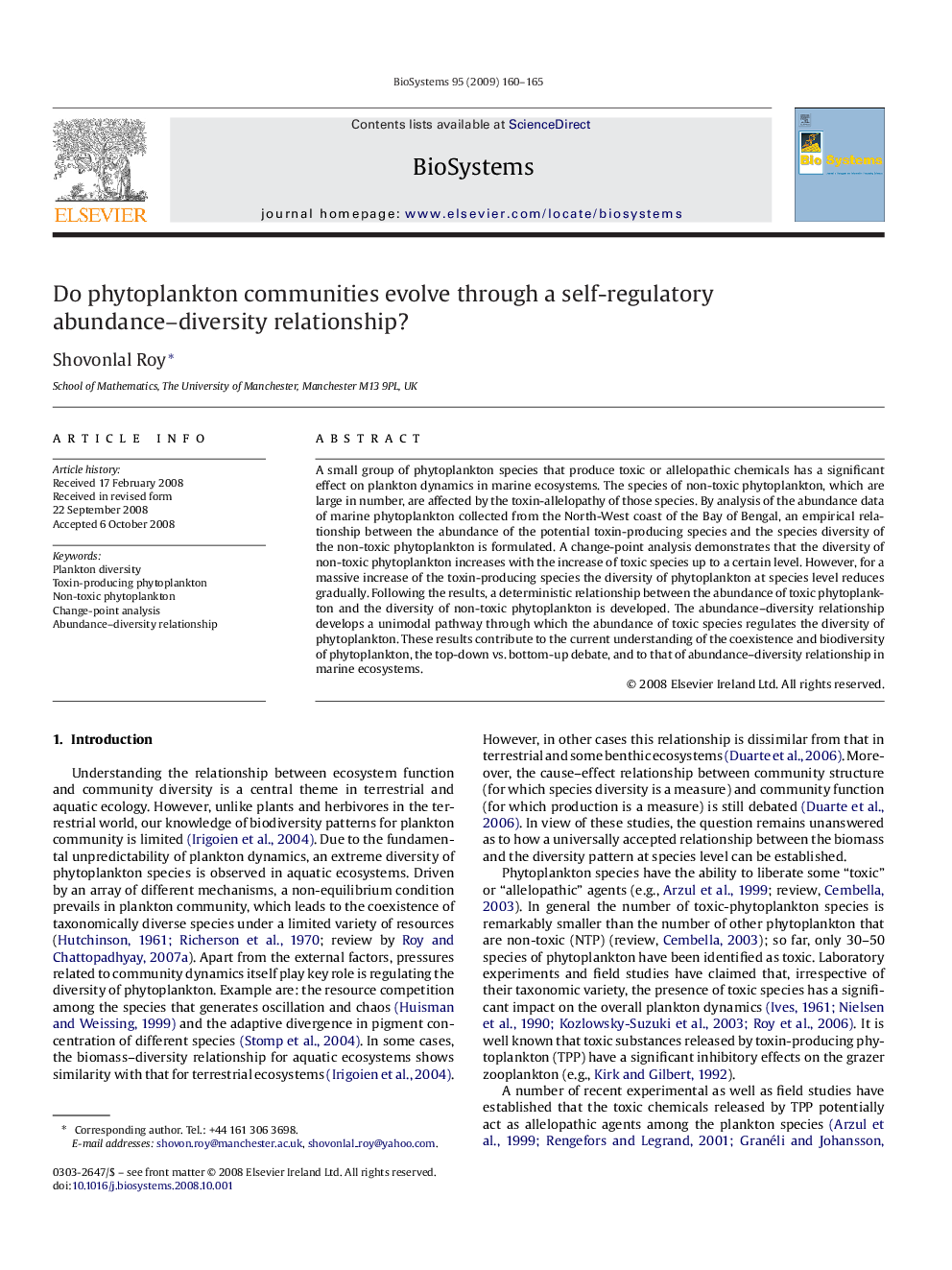| Article ID | Journal | Published Year | Pages | File Type |
|---|---|---|---|---|
| 2076612 | Biosystems | 2009 | 6 Pages |
A small group of phytoplankton species that produce toxic or allelopathic chemicals has a significant effect on plankton dynamics in marine ecosystems. The species of non-toxic phytoplankton, which are large in number, are affected by the toxin-allelopathy of those species. By analysis of the abundance data of marine phytoplankton collected from the North-West coast of the Bay of Bengal, an empirical relationship between the abundance of the potential toxin-producing species and the species diversity of the non-toxic phytoplankton is formulated. A change-point analysis demonstrates that the diversity of non-toxic phytoplankton increases with the increase of toxic species up to a certain level. However, for a massive increase of the toxin-producing species the diversity of phytoplankton at species level reduces gradually. Following the results, a deterministic relationship between the abundance of toxic phytoplankton and the diversity of non-toxic phytoplankton is developed. The abundance–diversity relationship develops a unimodal pathway through which the abundance of toxic species regulates the diversity of phytoplankton. These results contribute to the current understanding of the coexistence and biodiversity of phytoplankton, the top-down vs. bottom-up debate, and to that of abundance–diversity relationship in marine ecosystems.
